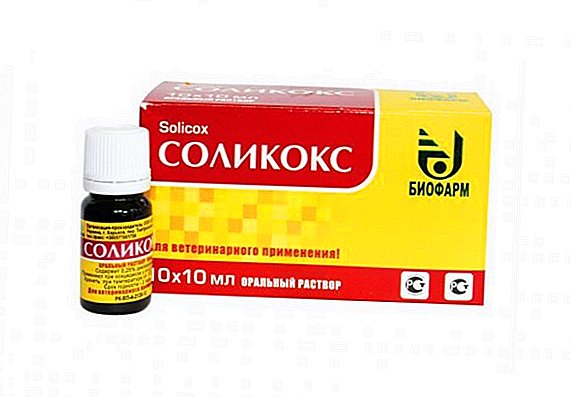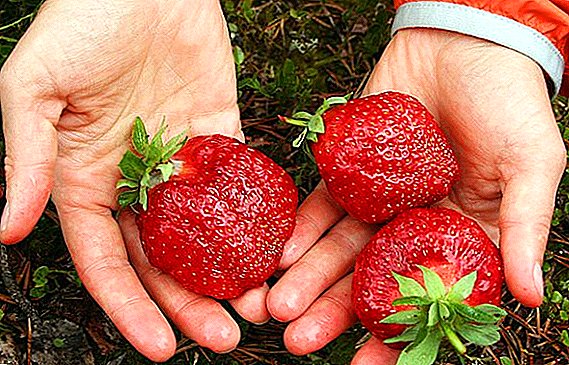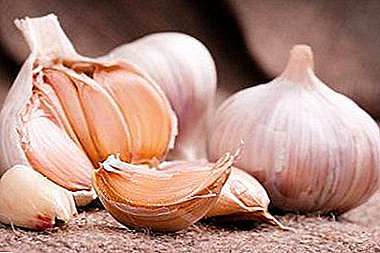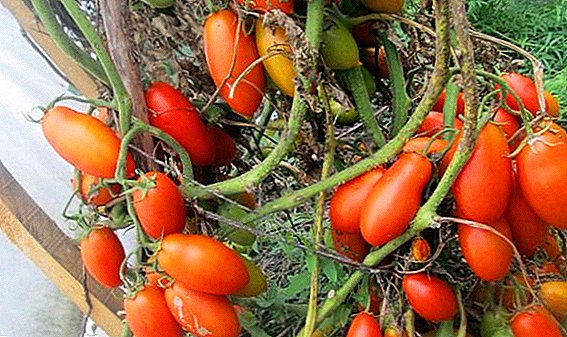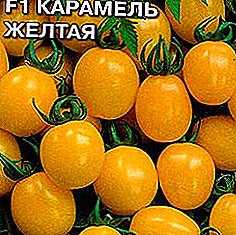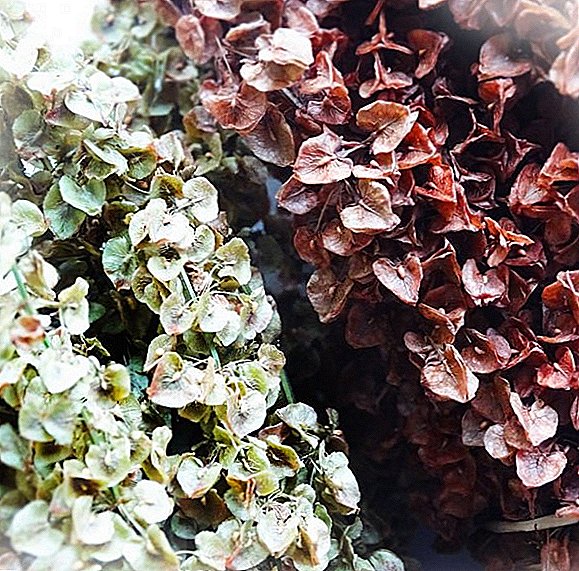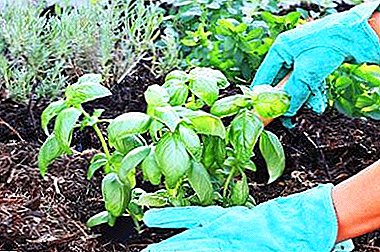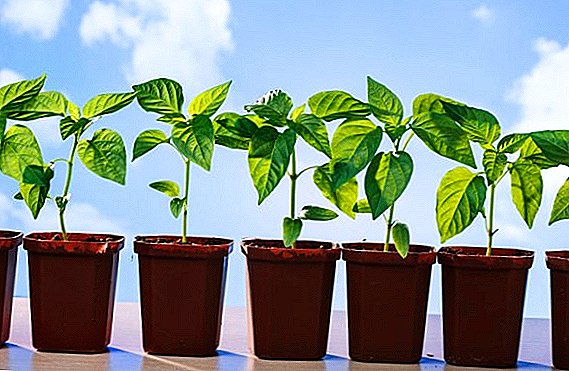 Currently, growers are willing to increasingly turn to the lunar calendar, as the concept of biodynamic farming has become very popular. Biodynamic farming is based on the cultivation of plants, in which the farmer relies on the phases of the moon. The influence of the earth satellite on vegetation has been observed by people since ancient times, but at this time this effect has already been scientifically proven. This article is devoted to the lunar calendar for 2019, it will indicate the most suitable time to work with plants.
Currently, growers are willing to increasingly turn to the lunar calendar, as the concept of biodynamic farming has become very popular. Biodynamic farming is based on the cultivation of plants, in which the farmer relies on the phases of the moon. The influence of the earth satellite on vegetation has been observed by people since ancient times, but at this time this effect has already been scientifically proven. This article is devoted to the lunar calendar for 2019, it will indicate the most suitable time to work with plants.
Why do I need a lunar calendar for the gardener and the gardener?
Each month, the Moon moves through all twelve constellations of the Zodiac in turn. This movement is called the stellar cycle of the moon and forms the basis of the biodynamic (lunar) calendar. Although the synodic cycle of the rise and decrease of the earth satellite is the most famous lunar rhythm, it does not play a major role in this calendar.
Since ancient times, the twelve zodiac constellations have been associated with each of the four elements: Earth, Water, Air and Fire. Three constellations are associated with each element, and each element is associated with a part of the plant: thus, the signs of the Earth are responsible for the roots of vegetation, signs of Water for leaf cover, signs of Air for flowers, signs of Fire for fruits.  For example, for sowing or harvesting carrots, one should choose the day under the earth signs of the zodiac, which are responsible for the development of the root. For planting leaf lettuce choose the day, which is under the signs of water and is responsible for the development of the above-ground mass of the plant. Legumes and apple seedlings are planted and sown in the days of the fire signs of the zodiac responsible for the development of the fruit.
For example, for sowing or harvesting carrots, one should choose the day under the earth signs of the zodiac, which are responsible for the development of the root. For planting leaf lettuce choose the day, which is under the signs of water and is responsible for the development of the above-ground mass of the plant. Legumes and apple seedlings are planted and sown in the days of the fire signs of the zodiac responsible for the development of the fruit.
Did you know? The outlines of a human face, which most of the inhabitants of the Earth distinguish on the lunar disk, give the satellite numerous craters and mountains located on its surface.
Cut flowers and broccoli cabbage seeds are sown under the zodiac air signs, which are responsible for flower development. In order to get a good harvest, it is important for plant growers to choose the right time to start cultivating various crops, to work on planting and protecting plantings, and also for harvesting.
When to plant seedlings in 2019
Plants that are grown for edible ground parts are planted and sown on the growing moon. It can be: tomato, cabbage, peppers and other vegetables. Also in this list you can include garden berries, such as strawberries or strawberries, and saplings of fruit trees. Crops grown for the roots (potatoes, carrots, beets, peanuts) are sown and planted in the phase of a waning moon.
| Sowing time in 2019 | Overground crops | Underground cultures |
| March | from 17 to 29 | from 3 to 16 |
| April | from 16 to 28 | 1 to 15 |

Favorable days for sowing
The table shows the most optimal time for planting and sowing of these crops. If this table does not recommend sowing any crop in a particular month, the gardener can always choose the appropriate day on his own. It must be remembered that the sowing of seeds for seedlings is best carried out in the growing phase of the Earth satellite.
| Culture | March 2019 | April 2019 |
| Cabbage | 7, 8, 18, 21 | 4-6, 8-10, 20-23 |
| Courgettes and eggplants | 20-24 | 4-6, 8-11, 19-23 |
| Beet, radish and legumes | 20-23 | 6-9, 19, 20, 23-26 |
| Bell pepper | 8-11, 20-24 | 7-11, 22, 23, 26, 27 |
| Tomatoes, cucumbers, carrots, watermelons and melons | 19-24, 27-28 | 5-9, 20-24 |
| Bulbous plants | 22-24, 26-27 | 4-8, 19-23, 26, 27 |
| Flowers from seeds | 12-14, 22-24 | 7-10, 19-22 |
Unfavorable days
Unfavorable days for sowing seeds for seedlings or grown seedlings in open or closed ground are all days that have periods of new moon or full moon. Also, sowing works are not carried out during the moon without a course, that is, when going from a sign to a sign, and in periods that are barren zodiac signs (fire and air).
Important! Gardeners should remember to use a biodynamic calendar compiled for the area in which it is used, since its own time zone operates in different places of the planet. The lunar calendar compiled by Moscow time is suitable for a resident of Perm and other cities of Central Russia, but will be incorrect for use, for example, inlan-Ude, because the difference of these time zones is 5 hours.
Moon phase effects
When working in the garden, it is necessary to consider the phase in which the moon is located. The lunar phases change in 4 stages, each of which takes about 7 days. 
Moon phases:
- Phase I - the lunar month begins with a new 3-day period, called the new moon. The moon arrives, this phase lasts from the new moon to the visible half of the surface of the lunar disk, in the initial period the moon is almost invisible.
- Phase II is the period of the arriving Moon, from half the moon to the full moon. At this time, the satellite is perfectly visible from Earth.
- Phase III is the time of the waning moon, from the full moon to half the surface of the satellite disk.
- Phase IV is the period of the waning Moon, from half the disk to the new moon, after which it becomes invisible to the eyes of the earthly observer.
New moon
A new moon is a phase of the moon in which it does not reflect light and is behind the solar disk, therefore during the new moon the earth satellite is invisible from the Earth. At this time, the root system or the leaves of plants grow much more slowly, which means little or no crop growth. New Moon is a resting stage for vegetation.
Important! The vegetable grower needs to be careful, since during the full moon there is a high probability of the appearance of pests on the plants.
At this stage, the plant sap is much more concentrated in the roots, and there is a lot of water in the soil. Being at rest, the plants experience less stress, so this is the ideal time to perform those plant care tasks that are not desirable for other lunar phases.
These include:
- weeding;
- mulching;
- sanitary pruning.

Growing
At this stage, the moon increases its surface and becomes clearly visible, with a new moon, the sickle of the month resembles the letter "C", turned in the direction opposite to the right side. Gradually, the crescent moon "gets fatter" until it resembles a half of a circle, its light becomes more intense.
In addition, at this stage, the satellite approaches the Earth and increases pressure on the planet. Vegetable juice at this time begins to rise from the roots to the tops of the plants. Water circulates intensively through the soil and is absorbed by the roots to a much larger extent.
Did you know? The moon weighs 81 times less than Earth.
Here are some of the work that must be done in the growth phase of the lunar disk:
- soil aeration is carried out;
- flowers and leafy vegetables are planted;
- vaccinations are being performed since their successful rooting at this time is more likely.

Full moon
At this time, the earth satellite looks like a fully formed, right circle. This phase marks the middle of the lunar month, the intensity of the lunar rays increases. At this stage, plant crops get more moisture, the juices in the stems circulate more actively. Juice is concentrated in the foliage, which due to this grows faster, and the roots develop more slowly. At this time, the plants develop rapidly and without delay.
We recommend that you familiarize yourself with the lunar sowing calendar for April 2019.
The tasks that need to be performed to take advantage of this stage:
- thinning of densely growing plants;
- seedlings of ornamental and fruit plants are planted, as well as seedlings of leafy vegetables, sowing of seeds is carried out;
- perennial rhizomes are separated;
- cuttings are carried out for subsequent vaccination.

Decreasing
During this period, the Earth’s satellite loses the shape of a circle and begins to decrease, the intensity of the lunar rays begins to decrease. The satellite disk will be reduced to full invisibility. In the descending phase, the disk looks like the letter "C" written in the right direction. This moon phase includes little activity in crops and plantings. Plant sap returns to the root system and concentrates in the roots, therefore the leaves grow more slowly, while the development of the underground part of the plants increases.
Read also about the lunar sowing calendar for May 2019.
Here are some tasks performed on a decreasing crescent:
- root crops, such as carrots, beets, or turnips;
- elimination of faded leaves;
- transplanting plants to a new place;
- fertilizer garden and vegetable garden;
- planting is not fruit trees.

Zodiac sign table
The table shows the plant cultures and zodiacal signs in combination with the lunar phases, with the coincidence of which these plants most optimally develop.
| Zodiac signs | Culture | Moon phases |
| Scorpio and Pisces, Aries and Cancer | Tomatoes | Second quarter |
| Cancer and Libra, Aries and Taurus | Cabbage and leaf lettuce, spinach | First quarter |
| Scorpio, Taurus and Libra, Cancer and Capricorn | Root vegetables (carrots, beets) | Third and fourth quarters |
| Cancer and Scorpio, Pisces | Cucumbers | First quarter |
| Aries and Scorpio, Sagittarius | Garlic | Second and third quarter |
| Scorpio and Sagittarius, Capricorn | Onion | Third quarter |
| Aries and Scorpio, Sagittarius | Feather bow | First and second quarters |
| Aries and Gemini, Cancer | Leek | First and second quarters |
| Taurus and Cancer, Libra and Fish | Turnip | Third quarter |
| Taurus and Cancer, Scorpio and Capricorn | Parsley root | Third quarter |
| Cancer and Libra, Scorpio and Pisces | Leaf parsley | First quarter |
| Taurus and Libra, Capricorn and Sagittarius | Radish | Third quarter |
| Gemini and Cancer, Virgo | Fennel, dill | First and second quarters |
| Taurus and Cancer, Scorpio and Pisces | Celery | First and fourth quarters |
| Aries and Taurus, Scorpio | Radish | Third quarter |
| Taurus and Cancer, Libra and Fish | Varietal cabbage | First quarter |
| Taurus, Libra, Scorpio, Pisces | Legumes | Second quarter |
| Taurus and Scorpio, Sagittarius and Capricorn | Jerusalem artichoke, potato | Third quarter |
| Cancer and Scorpio, Sagittarius and Pisces | Eggplant, Peppers | Second quarter |
| Cancer and Scales, Fish | Pumpkin | Second quarter |
| Cancer and Libra, Scorpio and Pisces | Gourds | First and second quarters |
| Cancer and Scorpio, Capricorn | Basil, mint | Second quarter |
| Cancer and Scorpio, Pisces | Garden berries | Third quarter |
Key recommendations
At the time of the arriving moon (phases I and II), gardeners can sow leafy vegetables and plant fruit trees and shrubs. During this period, the roots of plants are less susceptible to damage, so you can prepare the seedlings for rooting and grafting. During this period, it is also worth picking up medicinal and edible herbs, as they acquire a strong flavor and stay fresh longer.  It is also the best time to harvest fruits and vegetables for direct consumption. In phases III and IV, when the moon wanes, you can plant, transplant and prune trees. During this period, they quickly recover from damage, quickly adapt, and plants lose less juice after pruning. Root and perennial plants can be planted in the soil - the energy of the plants will be directed to the root system. It is also the best time to start pest and weed control.
It is also the best time to harvest fruits and vegetables for direct consumption. In phases III and IV, when the moon wanes, you can plant, transplant and prune trees. During this period, they quickly recover from damage, quickly adapt, and plants lose less juice after pruning. Root and perennial plants can be planted in the soil - the energy of the plants will be directed to the root system. It is also the best time to start pest and weed control.
If a gardener or a gardener adheres, when working with plants, to the recommendations of the lunar (biodynamic) calendar, the plants they grow will be healthy and the harvest will be high and of good quality.


